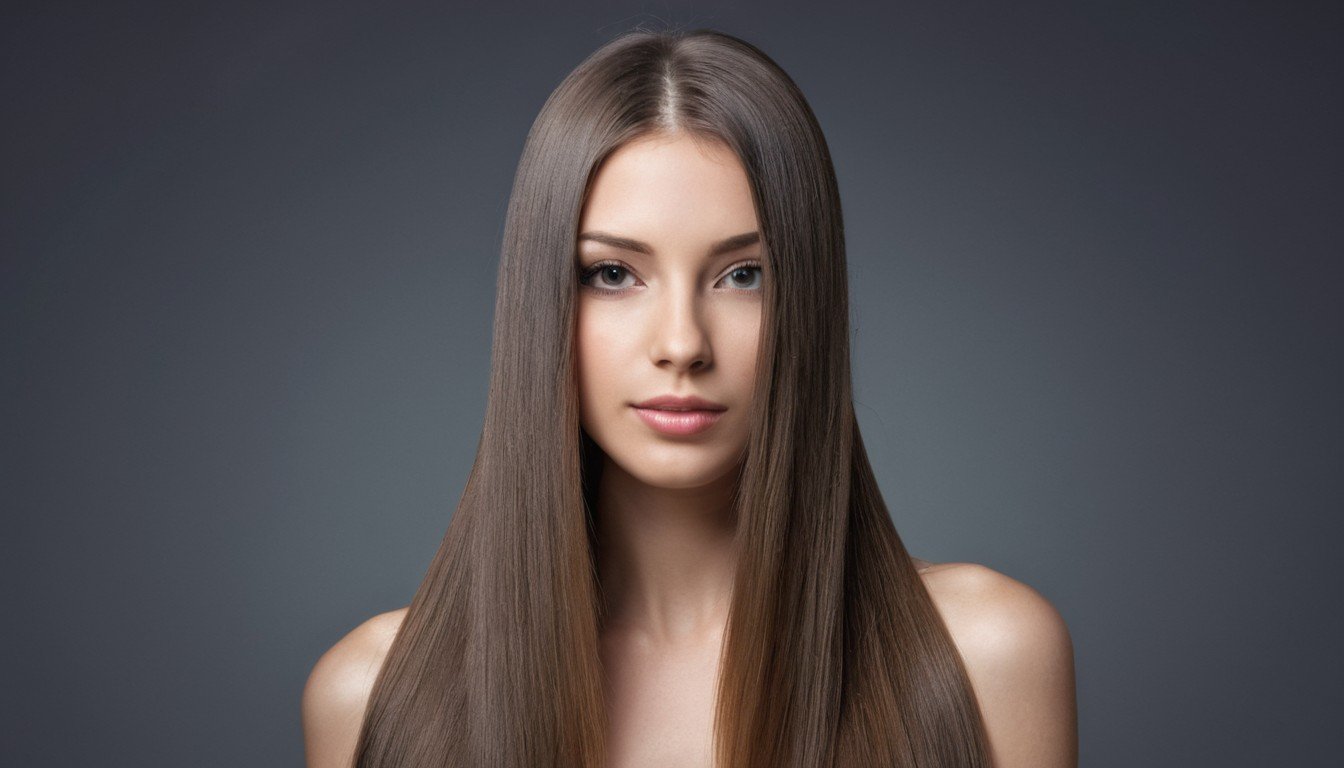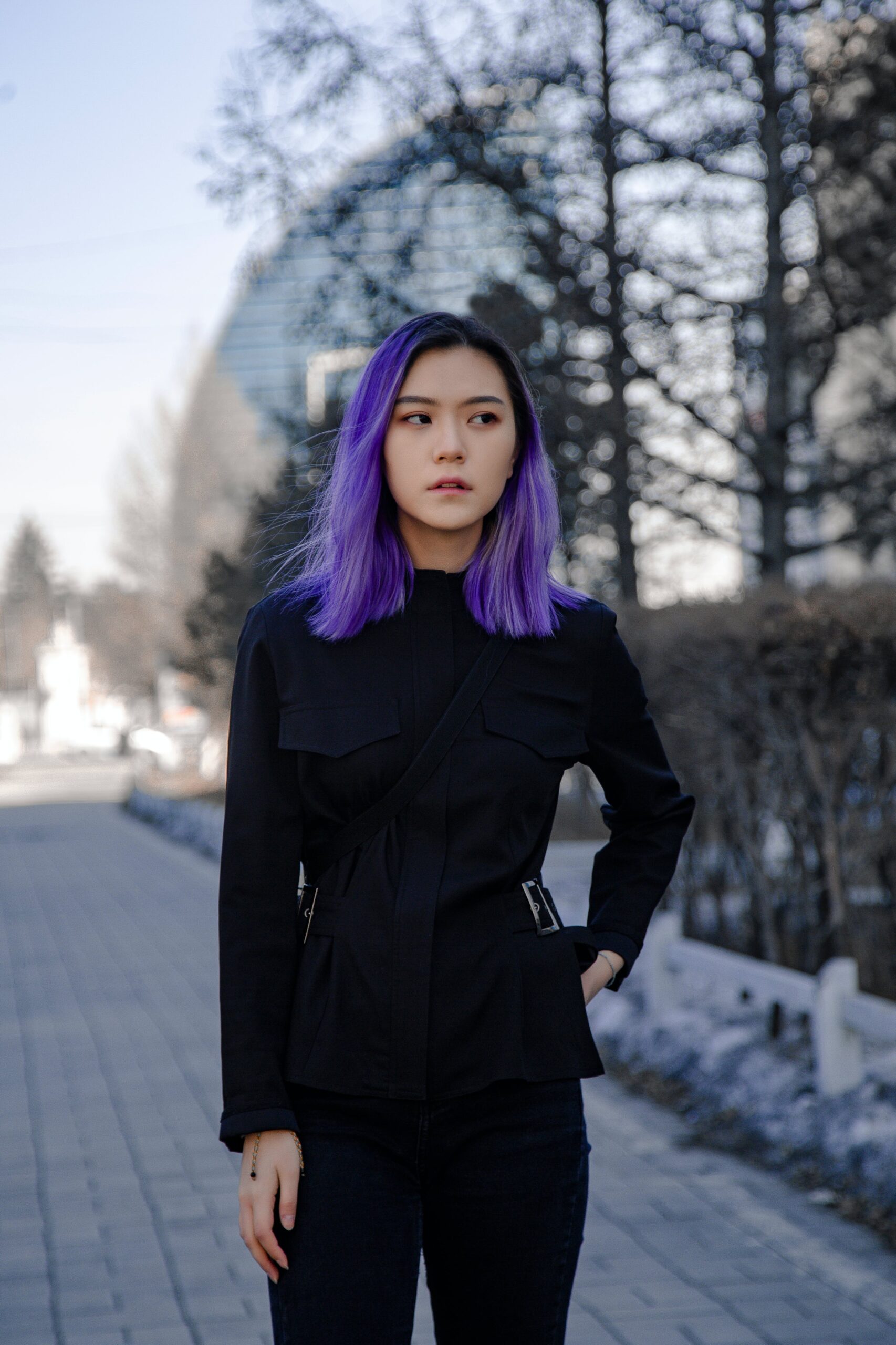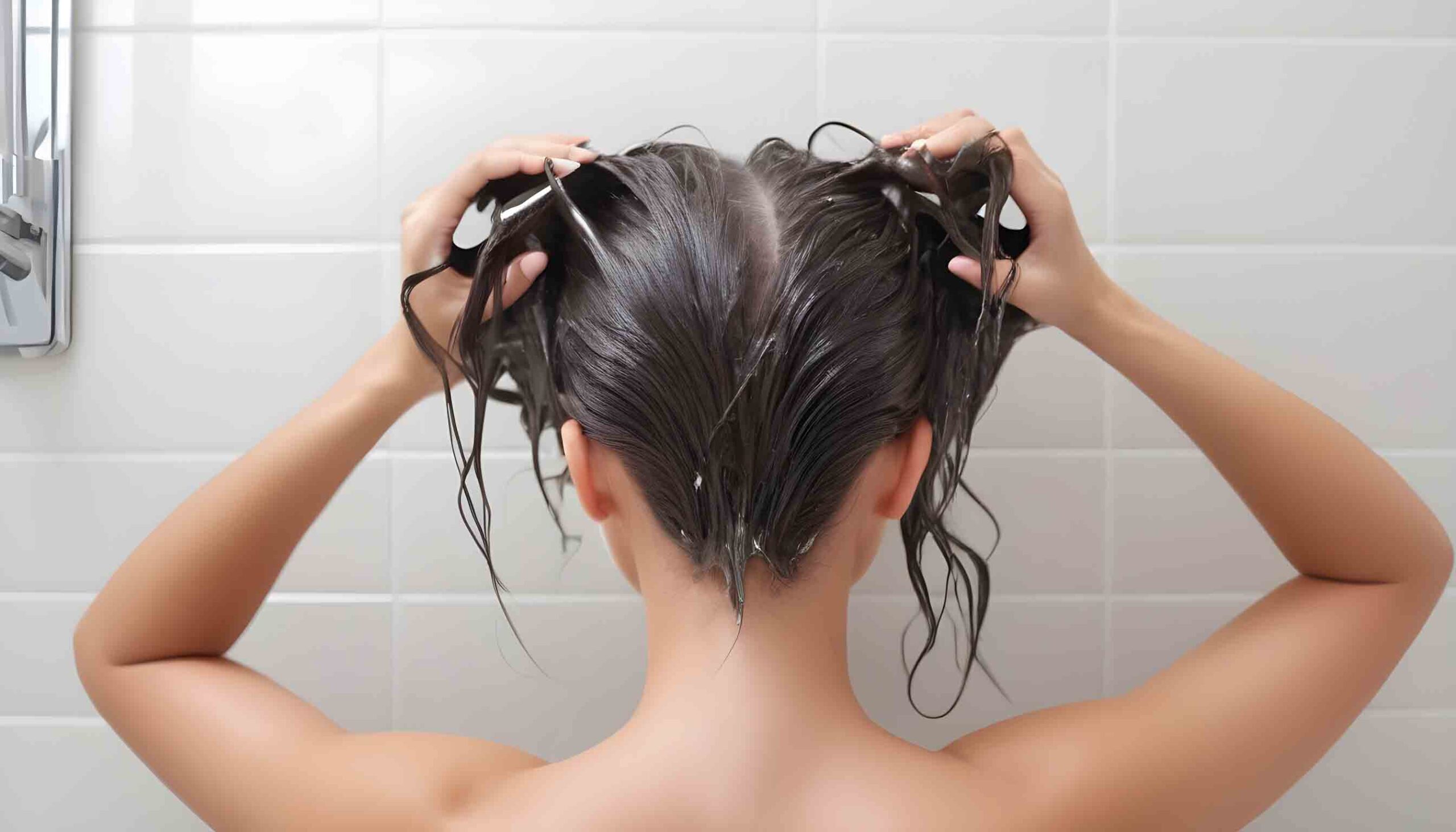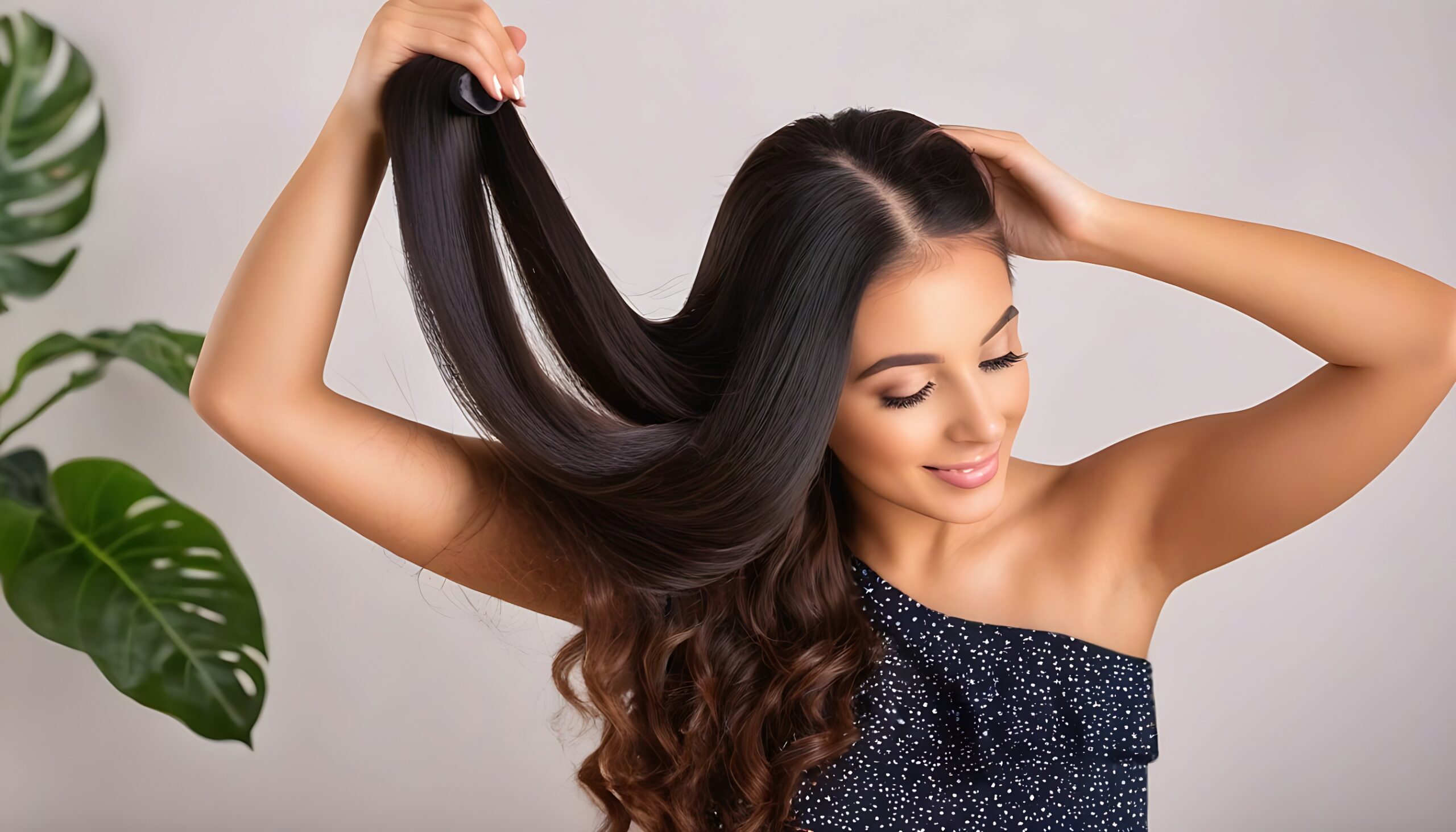Achieve sleek sophistication with our straight hair solutions. Discover the epitome of chic styling as we transform your locks into a cascade of smooth elegance. Our expert stylists specialize in the art of straight hair, utilizing advanced techniques and quality products to ensure a flawless, long-lasting finish. Whether you desire a sleek, polished look for a special occasion or everyday glamour,
our straight hair services cater to your unique preferences. Embrace the simplicity and timeless beauty of straight hair with our professional touch, leaving you with a stunning mane that exudes confidence and style. Elevate your look with our straight hair expertise today
Ice Spice Straight Hair: Unlocking Sleekness with Healthy Styling

Transform your tresses into a glossy masterpiece with the enchanting allure of ice spice straight hair. Our comprehensive guide explores the art of straightening, ensuring not only a sleek appearance but also maintaining the health of your strands. Dive into the world of styling options, from blow-drying techniques to the magic of ceramic straighteners. Discover moisture retention secrets, such as leave-in conditioners and essential oil applications, for a luscious, glossy finish.
Explore various straightening techniques, including the plastic rollers method and the transformative hair-wrapping tutorial. Delve into the science behind healthy hair, understanding the importance of omega-9 fatty acids and vitamin E for promoting growth and combating issues like flaky scalp and hair breakage. Uncover the truth about popular hair care trends, such as the no poo method and baking soda fads, and learn about FDA-approved treatments like Dutasteride and microRNA for addressing hair loss.
With a focus on maintaining your mane’s health, we guide you through effective hair care routines, debunk common myths, and introduce you to quality products like Happy Head for optimal hair health. Elevate your straight hair game with our expert insights into styling techniques, trends, and essential care routines for a stunning and healthy ice-spice straight hair transformation.
Effortless Elegance: Embracing the Straight Hair Mullet with Style
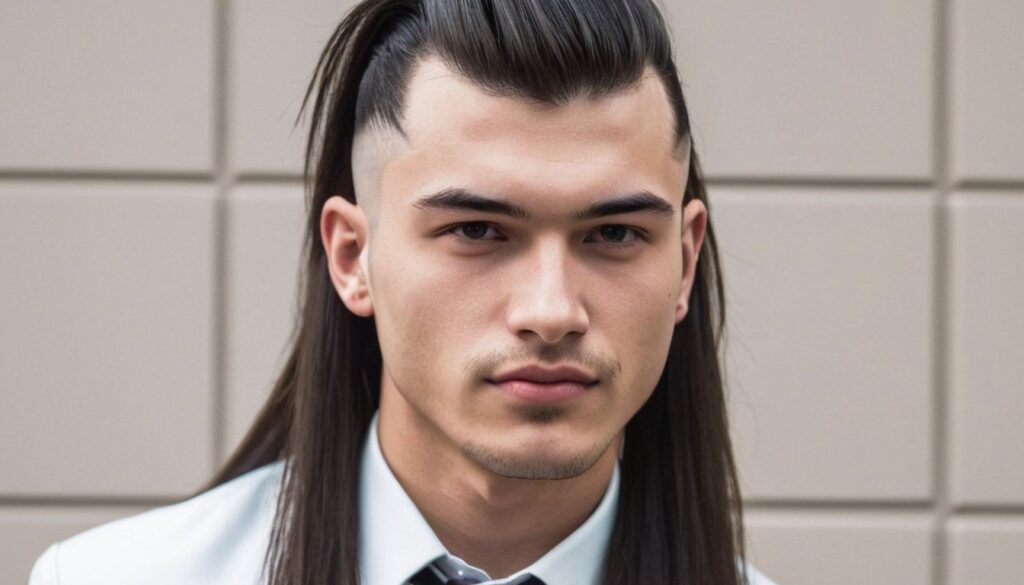
Unleash the bold fusion of sleekness and edginess with the straight-hair mullet, a modern take on this iconic hairstyle. Dive into the world of straightening techniques, exploring the use of ceramic straighteners and blow-drying methods to achieve a glossy appearance. Discover how moisture retention is key to maintaining the health of your hair, with tips on using leave-in conditioners and essential oils for a luscious finish.
Navigate the realm of hair care with insights into styling options, from the plastic rollers technique to the transformative hair wrapping tutorial. Explore the benefits of keratin-packed conditioners and the straightening serum for a straighter appearance. Delve into the science behind hair growth, understanding the role of omega-9 fatty acids and vitamin E in promoting healthy strands. Address scalp conditions like flaky scalp, seborrheic dermatitis, and scalp psoriasis with the right clarifying shampoo and coconut oil penetration.
Whether you’re intrigued by the no-poo method or considering FDA-approved treatments like Dutasteride and microRNA, our guide covers it all. Elevate your straight-hair mullet game with tips on conditioning, styling, and maintaining a healthy mane. Unleash your inner style icon with this avant-garde hairstyle, blending the classic with the contemporary for a look that exudes confidence and individuality.
Frame Your Beauty: Curtain Bangs for a Sleek Straight Hair Look

Elevate your straight hair style with the timeless allure of curtain bangs, effortlessly framing your face for a sleek and chic appearance. Begin by embracing the art of straightening with ceramic straighteners and blow-drying methods, ensuring a glossy finish that accentuates your natural shine. Explore the healthy styling options that curtain bangs offer, adding a touch of sophistication to your overall look.
Maintain the health of your sleek mane by incorporating moisture retention techniques, such as leave-in conditioners and essential oil applications, promoting the well-being of your hair follicles and strands. The plastic rollers technique enhances varied hair textures, creating a seamless blend with your curtain bangs. Dive into the benefits of keratin-packed conditioners, safeguarding against potential hair damage while contributing to a straighter appearance.
Navigate the world of scalp care to address conditions like flaky scalp, seborrheic dermatitis, and scalp psoriasis with the right clarifying shampoos and coconut oil penetration. Unlock the secrets to preventing hair breakage and split ends, steering clear of the no-poo method and baking soda fads. Our guide explores the perfect blend of style and health, offering insights into haircare products and treatments like Happy Head for optimal hair maintenance. Embrace the curtain bangs trend, and let your sleek straight hair take center stage.
Pros and Cons of Straight Hair: Insights from Madison Reed
Straight hair has long been considered the “ideal” hair type in many cultures. Its sleek, smooth appearance symbolizes order and polish. But in reality, naturally, straight hair comes with unique challenges. Hair color and care brand Madison Reed examined the pros and cons of straight tresses.
The Pros
- Styling versatility – straight hair can be easily curled, waved, or flipped in and out with hot tools.
- Less time spent on daily styling – naturally straight hair often requires less blow-drying or treatment compared to curly/oily locks.
- Sleek, shiny appearance – the smooth cuticle of straight hair strands reflects light nicely, giving hair a glossy look.
- Increased volume – straight hair is better able to hold volumizers like mousses compared to highly textured hair.
The Cons
- Oiliness – straight hair’s lack of texture can lead to flat, oily locks that easily separate. Daily washing is often needed.
- Limpness – without proper layering or products, straight hair can fall flat and look lifeless and thin.
- Damage vulnerability – straight hair’s cuticle lies flat, exposing vulnerable inner layers to damage from drying, coloring, and heat styling.
- Lack of natural texture – curls, waves, and kinks help disguise areas of damage. Super sleek hair shows split ends clearly.
While straight locks are beautiful, they do require diligent conditioning and gentle handling to keep them looking healthy and full of shine.
Straight Hair Care Tips for Gorgeous and Healthy Locks
Caring for straight hair presents unique challenges. Without proper products and techniques, straight locks can quickly become dull, limp, and damaged. We asked Madison Reed’s team of hair care experts for their top tips tailored to straight tresses:
- Shampoo less frequently – only lather up 2-3 times per week to avoid drying out hair’s natural oils.
- Use repairing treatments – weekly reparative masks and leave-in treatments offset chemical/heat damage.
- Apply product when wet – only condition, detangle, and style straight hair when damp to avoid breakage.
- Dry with a nozzle attachment – concentrate airflow to avoid disturbing the cuticle and causing frizz.
- Add layers – graduated lengths in long straight hair create movement and body.
- Try volumizing products – dust roots with texturizing sprays or powders before styling.
- Protect before heat styling – prep hair with a heat protectant and rely on lower temperatures.
With the right routine focused on moisture retention and gentle handling, straight hair can thrive!
Styling Tips for Naturally Straight Hair
While straight hair seems simple to style, the lack of texture can make it tricky to create volume and fullness. We asked professional stylists for their best tips for boosting the body and bending in straight hair.
Straightening Your Hair: Heat vs. Heatless Techniques
For those with wavy or curly locks seeking a temporarily sleek look, both heated and heatless straightening techniques exist. Here’s a comparison of the pros and cons:
Heated Straightening
- Tools: flat irons, blow dry brush
- Pros: Long-lasting, smooth results; easy to achieve sleekness
- Cons: Risk of heat damage and breakage; requires heat protectants
Heatless Straightening
- Methods: hair wrapping, wet braids, rollers
- Pros: Gentle on hair; reduces the need for hot tools
- Cons: Can take a long time; doesn’t last as long as heat methods
While heatless straightening is kinder to hair overall, heated tools provide longer-lasting results. Using a combo of both can help minimize damage. Prep hair properly and use lower temperatures when opting for hot tools.
The Science of Straight Hair: Types and Structures
What gives straight hair its smooth, sleek qualities? Here’s an overview of the scientific characteristics of straight locks:
- Shape – Straight hair grows vertically from the scalp with no curl, wave, or bend pattern.
- Texture – Can range from fine, medium, and coarse strands. Coarser hair tends to be straighter.
- Cuticle – Lies flat against hair shaft; smooth outer layer reflects light and allows moisture to escape.
- Cortex – Small, tightly packed cortex cells give straight hair a “rigid” structure.
- Cross-section – Straight hair has a circular cross-section. Oval or irregular shapes allow for curl.
- Growth pattern – Straight hair typically grows uniformly down from follicle. No curl or wave growth pattern.
Understanding the biology of your straight strands helps inform ideal care!
Tips for Maintaining Straight Hair Health
Between heat styling, coloring, and environmental factors, keeping straight strands in top condition can be a battle. Follow these expert care tips from Madison Reed:
H3: Different Types of Straight Hair: Fine, Medium, Coarse
Not all straight locks are the same. Hair can be categorized into fine, medium, and coarse strands:
- Fine-Very thin strands with lots of flexibility. Vulnerable to damage. Often very straight and silky. Needs lightweight products.
- Medium – A balanced, normal strand thickness. Still prone to damage but can tolerate some treatments. Works with a variety of products.
- Coarse – Thick, rigid strands. Most resistant to damage. Can feel dry or wiry. Needs deeply hydrating hair products.
Know your hair density and width to pick products that provide enough – but not too much – moisture and conditioning.
H3: Madison Reed’s Guide to Straight Hair Care
The experts at Madison Reed have mastered the art of caring for temperamental straight hair. Follow their top five rules:
- Shampoo less – One to two times per week max. Overwashing strips moisture.
- Deep condition often – Use a weekly reparative mask. Relaxes rigid cuticle.
- Detangle gently – Only comb hair when wet and conditioned. Start at ends.
- Protect before styling – Use a heat protectant or primer before hot tools.
- Beware of chlorine/salt water – Both can wreak havoc on the straight hair cuticle.
Consistent deep conditioning, minimal washing, and gentle handling helps keep straight hair looking its best!
Achieving Volume and Shine for Naturally Straight Hair
Amp up the volume and shine factor in straight hair with these easy everyday tricks:
- Apply mousse only to roots for targeted lift.
- Set hair in Velcro rollers before bed for a lasting body.
- Part hair slightly off-center to add height at the crown.
- Finish with a spritz of light-hold hairspray to boost staying power.
- Add gloss and hydration with a few drops of serum or oil on mid-lengths and ends.
Coloring and Styling Tips for Straight Hair
Avoiding Damage: Straightening with Care
Limiting damage from hot tools and chemical treatments is key for straight hair health. Follow these precautions:
- Always use a heat protectant before flat ironing or blow-drying
- Keep flat iron under 400°F – lower temperatures minimize damage
- Allow hair to air dry as much as possible before using hot tools
- Alternate straightening techniques – try blowouts one day, flat iron the next
- Go for balayage highlights rather than full foil highlights to limit overlapping chemical processes
- Extend time between coloring services – aim for 6-8 weeks between salon visits
- Pick semi-permanent gloss or glaze services over permanent dye for gentler processing
With care, straight hair can withstand moderate styling while retaining its integrity.
How to Straighten Your Hair Without Heat
Heatless styling creates temporary straight locks while being gentle on hair. Try these overnight techniques:
The Classic Hair Wrap
- Apply styling product evenly from roots to ends on damp hair
- Make a center part and twist hair from both sides into a bun
- Wrap hair tightly against the head and pin it in place with bobby pins
- Top with a silk scarf and sleep through the night
Turban Twist Hair Rolling
- Section damp hair and brush product through from mid-lengths to ends
- Twist each section and begin coiling into a circle against the head
- Wrap head with a soft turban and leave on overnight
Plastic Hair Rollers
- Work leave-in conditioner through towel-dried hair
- Section hair and wrap lengths around a roller, pinning ends under
- Once hair is rolled against the scalp
- Once hair is rolled against the scalp, wrap the head in a silk scarf
- Leave rollers in for at least 8 hours or overnight
Bobby Pin Flat Wrap
- Apply to smooth serum all over slightly damp hair
- Loosely twist hair sections and coil them against the scalp
- Place bobby pins flat against the head to secure hair coils
- Cover with a silk scarf to lock in warmth and moisture overnight
Wet Braids
- Shampoo hair and apply conditioner focusing on ends
- Separate into 2-4 braids while hair is still dripping wet
- Tightly braid hair from root to tip
- Let braids air dry fully before undoing for soft waves
Using these no-heat overnight techniques 1-2 times per week helps give straight hair a temporary break. Be sure to use a good conditioner before rolling or braiding to avoid tangles.
Tips for getting straight hair without using heat:
In addition to overnight styling methods, the following daytime tips can help straighten hair without damage:
- Blow dry with cold air – Using the cool setting on a blow dryer can help smooth hair’s cuticle while avoiding heat.
- Wrap your hair – Sectioning dry hair and securely wrapping it around your head preserves straightness between washes.
- Roll with plastic rollers – For short styles, rolling dry hair with soft plastic rollers boosts sleekness once removed.
- Use products meant to straighten hair – Serums with smoothing silicones or keratin help relax the cuticle.
- Sleep with your hair wet – Braiding, twisting, or wrapping freshly washed hair to air dry keeps styling minimal.
- Try a hair mask – Weekly reparative masks relax rigid, dry fibers over time for easier straightening.
- Apply essential oils – Oils like argan, jojoba, and coconut penetration help soften the hair cuticle.
How to Straighten Your Hair Without Heat
Avoiding too much hot tool usage is crucial for maintaining the health of straight tresses. Luckily, gentle overnight techniques and targeted products can help encourage lasting straightness without damage:
Blow dry with cold air
Using a blow dryer on a low heat or cool setting will dry hair smoothly without disrupting the cuticle as much as heat styling. Concentrate the airflow at the roots for volume, then direct down the lengths of hair to encourage sleekness as it dries.
While air drying is ideal, cold air from a blow dryer can help shape straight hair without excessive heat. Be sure to use a nozzle attachment to concentrate the air flow.
Wrap your hair
Whether your hair is dry or freshly washed, wrapping it securely around your head can help boost its straight shape. For dry hair, mist strands with water first to reset the cuticle. Apply a smoothing serum or cream through damp hair’s mid-lengths and ends before wrapping hair into a bun.
For wet hair, work a conditioning treatment through damp strands before twisting hair into sections. Tuck hair close to the scalp and wrap a soft silk scarf around the head to let hair air dry overnight for lasting results.
Roll with plastic rollers
Using soft, lightweight plastic rollers is an easy way to smooth out frizz and bumps in straight hair. Work a hydrating styling cream through dry locks first. Then, section hair and roll lengths around rollers near the scalp, pinning ends under to secure.
Leave rollers in for at least an hour before unrolling. The gentle compression helps relax the hair cuticle over time for an air-dried straightening effect. Finish by smoothing lightly with a wide-tooth comb.
Use products meant to straighten hair
Look for hair products infused with smoothing ingredients like silicone, keratin, botanical oils, or cysteine. These can help fill any gaps in the cuticle layer and create temporary straightness when combed through damp hair before air drying.
If your hair doesn’t air dry fully smooth, follow up with an anti-frizz serum containing dimethicone or amino acids to increase sleekness. Light hold hairsprays can also seal the cuticle.
Sleep with your hair wet
One of the simplest heatless ways to temporarily straighten locks is to braid, twist or wrap hair while soaking wet and let it air dry as you sleep. Smooth a rich conditioner or mask through shampooed hair before braiding into 2-4 sections.
For extra hold, mist hair with lavender water or smoothing serum before braiding. The key is starting with thoroughly wet hair and keeping it braided tightly against the scalp as it dries.
Try a hair mask
Deeply conditioning straight hair is vital for maintaining health and encouraging lasting straightness. Opt for weekly reparative masks that contain nourishing ingredients like coconut oil, shea butter, jojoba oil, argan oil, or olive oil to relax the cuticle over time.
For deeper penetration, wrap freshly washed and conditioned hair in a plastic processing cap, then wrap hair in a warm towel while the mask soaks in for 20-30 minutes. Rinsing thoroughly prevents product buildup.
Apply essential oils
Essential oils are another gentle way to help straighten hair between washes. Try using pure argan, coconut, jojoba or almond oils which can penetrate the hair cuticle and boost shine. Avoid oily scalp by focusing on mid-lengths to ends.
For nighttime use, massage several drops of oil into damp hair after washing and let air dry. The oils help seal moisture in for improved sleekness and less frizz. Limit oil use to avoid greasiness.
Tips for getting straight hair without using heat:
Blow dry with cold air
One of the best ways to get sleek, straight hair without exposing it to excessive heat is to blow dry using only cool air. Start by applying a heat protectant or anti-frizz serum on damp strands after washing. Then, using a blow dryer with a nozzle attachment, concentrate airflow at the roots while keeping the temperature on the cool setting. Work down sections slowly until hair is smooth and dry. It may take a few extra minutes, but avoiding heat damage is worth the time. Finish by running a wide-tooth comb through to get rid of flyaways.
Wrap your hair
Hair wrapping is an easy heat-free trick for smooth, straight locks. On slightly damp hair, apply a hydrating hair cream evenly from roots to ends, then section the hair. Twist strands loosely to form a coil, then wrap hair close to the scalp and secure with bobby pins to set. Wrap a silk scarf on top and leave in overnight. The gentle compression smooths strands for lasting straightness by morning. For dry hair, spritz with water and serum before wrapping.
Roll with plastic rollers
For quick straightening touch-ups, roll small sections of dry hair with soft, flexible plastic rollers. Mist hair lightly with water first, then evenly distribute a smoothing leave-in cream from mid-lengths to ends. Section hair and roll lengths of hair onto rollers near the scalp, pinning ends in place. Leave in for an hour or two, then unroll. The rollers gently iron out kinks and waves for temporary sleekness until your next hair wash.
Use products meant to straighten hair
Look for styling products formulated to help straighten unruly strands like anti-frizz serums and leave-in creams containing smoothing silicones, amino acids like cysteine, or keratin. Apply these straightening-boosting products on damp hair before air drying or rolling for softened sleeker results. If hair still isn’t fully straight once dry, use a flat brush to gently pull strands taut while blow drying with cool air.
Sleep with your hair wet
One of the most popular at-home tricks for low-maintenance straight hair is to simply go to bed with freshly washed, damp locks. Shampoo and towel dry hair as normal, then evenly apply your favorite conditioner or mask treatment from roots to ends. Next, section hair and tightly braid, twist, or wrap hair against your head before going to sleep. Letting hair slowly air dry into the braided shape keeps styling minimal for smooth, straight strands in the morning.
Try a hair mask
Using a deeply nourishing hair mask 1-2 times per week helps relax and soften the hair cuticle over time for easier heatless straightening. Opt for reparative masks containing natural oils and butter to penetrate strands. After shampooing, smooth mask through damp hair and let sit for 15-30 minutes before rinsing out. The moisture boost helps hair air dry straighter and cuts frizz between washes.
Apply essential oils
Massaging concentrated essential oils like argan, coconut, or almond oil through the mid-lengths and ends of the hair can mimic a straightening effect. The oils help seal in moisture and relax the hair cuticle. Avoid roots to prevent greasy buildup.
Apply essential oils
Massaging concentrated essential oils like argan, coconut, or almond oil through the mid-lengths and ends of the hair can mimic a straightening effect. The oils help seal in moisture and relax the hair cuticle. Avoid roots to prevent greasy buildup. Apply several drops to towel-dried hair after washing and style as usual, or add oils at night and wrap the hair to penetrate overnight before straightening in the morning.
How to Straighten Your Hair Without Heat
Achieving sleek, smooth straight hair doesn’t have to involve the daily use of hot tools. There are many effective heatless styling techniques that can help encourage lasting straight locks overnight or between washes:
Blow dry with cold air
While air-drying hair is ideal, blow drying on a low or cool setting still provides a gentle straightening boost. After washing and conditioning, apply a smoothing cream through damp hair. Then use a blow dryer with a nozzle attachment to direct air flow down sections of hair. Keep the temperature low to avoid damage while drying.
Wrap your hair
Whether hair is dry or freshly cleansed, wrapping it securely against your head preserves straightness. For dry hair, lightly mist strands with water and apply a serum before sectioning hair. Twist hair coils close to the scalp and wrap with a silk scarf overnight. For wet hair, condition well and coil tightly before wrapping.
Roll with plastic rollers
Soft, lightweight rollers gently smooth hair’s cuticle while avoiding direct heat. After washing and conditioning, work a styling cream through damp hair. Then section hair and roll lengths of hair around rollers near the scalp, pinning ends under. Remove rollers after an hour or more.
Use straightening products
Serums and creams containing silicone, keratin, or oils help temporarily relax the hair cuticle for straighter strands. Apply these straightening-boosting products after washing damp hair and let air dry fully. Finish by gently pulling hair taut with a brush while blow drying on low heat.
Sleep with wet hair
One popular heatless trick is to tightly braid, twist, or wrap freshly washed hair and go to bed with damp locks. The braided shape helps hair air dry straight overnight with minimal styling needed in the morning. Ensure hair is thoroughly wet and use a rich conditioner before braiding against the scalp.
Do a hair mask
Weekly deep conditioning masks relax and soften hair over time for easier straightening. After shampooing, apply a moisturizing mask that contains natural oils and butter. Let sit for 15-30 minutes under a shower cap for deeper penetration before rinsing out. Follow with gentle heatless styling techniques for lasting effects.
Use essential oils
Massaging concentrated oils like argan, coconut, or almond oil through damp hair helps mimic a straightening effect. The oils seal in moisture and relax the cuticle. Focus application on mid-lengths to ends and avoid roots. Oils boost straightness when applied before braiding damp hair or before heatless styling methods.
Is straight hair good for hair?
Straight hair has both advantages and drawbacks when it comes to overall hair health:
Pros:
- Appears visibly smooth and sleek when healthy
- Can better hold a style with products/heating tools
- Requires less intensive daily styling for some
- Easier to temporarily straighten when curly/wavy
Cons:
- Prone to looking limp, and lifeless when damaged
- Can easily suffer heat/chemical damage without proper care
- Lacks texture to hide signs of damage like split ends
- The cuticle lies flat, allowing moisture loss and breakage
The key is caring for straight hair gently, using repairing treatments, and moisturizing well to keep the cuticle sealed and strands strong. With proper maintenance, straight hair can look very healthy. But without diligent conditioning, it can become quite damaged.
How can my hair be straight?
For those with naturally wavy, curly, or oily hair seeking straighter locks, here are some ways to help hair appear smooth:
Temporary Straightening
- Blow dry hair with a round brush
- Wrap damp hair tightly to air-dry
- Set hair in rollers or pin curls overnight
- Apply silicone/keratin-based smoothing serums
- Use flat irons, straightening brushes and blow dryers with a heat protectant
- Get keratin or straightening chemical treatments (damaging if overdone)
Lasting straightness:
- Japanese thermal straightening (breaks bonds permanently)
- Brazilian Blowout (smooths cuticle semi-permanently)
- Relaxing chemical treatments (can damage if not done properly)
To avoid damage, minimize chemical/thermal treatments and focus on gentle heatless techniques, conditioning well, and using targeted straightening products. Consult a stylist to explore semi-permanent options safely.
Is straight hair good hair?
The idea that straight hair is “good” or more desirable than curly/oily hair is problematic. In reality, all hair types are beautiful in their own way.
Evaluating hair’s “goodness” holistically:
- Hair health – Smooth, shiny, hydrated, no split ends
- Personality fit – Expresses personal style and flatters face
- manageability – Easy to style and care for daily
- Genetic match – Aligns with natural hair type and texture
- Feel-good factor – Provides confidence and pride in appearance
When evaluating hair’s “goodness,” don’t rely on stereotypes. Focus on finding a look that makes you feel happy, confident, and beautiful no matter your natural hair texture.
What is called straight hair?
“Straight hair” is a hair type that lacks any inherent curl, wave, or bend. Here are the defining traits of straight locks:
Appearance:
- Hangs straight down when air-dried
- No curl or wave pattern
- Falls below shoulder level when long
- Reflects light well, high shine when healthy
Texture & Strands:
- Very smooth, with cuticle lying flat
- Often more rigid and less elastic than curly hair
- Can be fine, medium, or coarse strand thickness
- Circular cross-section of each strand
Styling:
- Requires minimal effort to detangle
- Can be easily smoothed with brushing
- Takes well to thermal styling with hot tools
- Wraps/rolls easily around heat tools or hair rollers
Growth:
- Grows straight down from follicle, no curl or bend
- Hair density is even, with no variations in thickness
- Can be prone to oiliness/limpness at the roots
- Benefits from layered haircuts to encourage movement
Identifying your hair type and texture helps determine your ideal care routine. Embrace the uniqueness of your natural hair!
Sleek and Chic: Optimal Haircuts for Straight Hair Styles
Discover the perfect harmony of style and simplicity with haircuts tailored for straight hair. Embrace the sleek allure of straightening techniques, utilizing ceramic straighteners and blow-drying methods to achieve a glossy appearance that enhances your hair’s natural shine. Explore the world of healthy hair care, from moisture retention tips with leave-in conditioners to the transformative plastic rollers technique for varied hair textures.
Delve into the benefits of keratin-packed conditioners and straightening serums that not only contribute to a straighter appearance but also safeguard against potential hair damage. Learn the art of moisture-rich hair masks and essential oil applications, promoting the health of your hair follicles and strands. Unlock the secrets to managing scalp conditions like flaky scalp, seborrheic dermatitis, and scalp psoriasis through the right clarifying shampoos and coconut oil penetration.
Whether you’re seeking haircuts for added volume, sleek layers, or face-framing bangs, our guide covers it all. Explore the beauty of straight hair with tips on maintaining a healthy mane, debunking hair care myths, and incorporating the right products for optimal hair health. Elevate your style game with haircuts that not only enhance your sleek mane but also reflect your unique personality and preferences.
Conclusion
While straight hair seems low-maintenance at first glance, caring for ultra-sleek locks actually requires diligent conditioning and gentle handling to prevent damage. Using repairing treatments and hydration-boosting masks keeps the hair cuticle sealed and strands strong. Gentle heatless styling techniques like hair wrapping, wet braiding, and rolling can temporarily straighten without causing harm.
When opting for hot tools, always prep hair with a protectant first and rely on lower temperatures. Cut down on chemical treatments and extend the time between salon visits. With a nurturing, restorative approach, straight hair can thrive and avoid the risks of dryness, brittleness, and breakage over time. Emphasize overall hair health, not just temporary smoothing, for your sleekest, shiniest straight strands ever.
Frequently Asked Questions
Is straight hair more prone to damage?
Yes, straight hair is more vulnerable to damage from heat styling, chemical services, washing, and environmental factors. The smooth, flat cuticle allows moisture to escape while exposing inner layers. Regular conditioning and gentle handling help combat potential damage.
How often should straight hair be washed?
Only lather up straight hair 2-3 times per week at most. Too frequent washing strips the cuticle of moisture. Rely on dry shampoo between washes to absorb oil at the roots.
What’s the best way to dry straight hair?
Air drying is ideal to minimize damage, but you can blow dry on a low heat setting if needed. Always use a heat protectant before hot tools. Concentrate airflow at roots for volume, then work down the hair shaft slowly.
Which products work best for straight hair?
Opt for moisturizing shampoos and smoothing conditioners. Keratin treatments temporarily “relax” the cuticle. Silicone serums like dimethicone provide frizz control. Volumizing mousses or sea salt sprays help boost the body at the roots.

